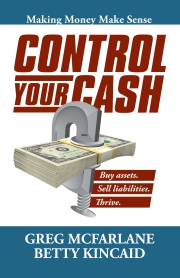 “The future belongs to the common man with uncommon determination.”
“The future belongs to the common man with uncommon determination.”
Baba Amte
When I was in junior high school, I joined the local Junior Achievement chapter. My “company” made Christmas tree skirts which we later sold to our parents.
The lesson I learned from this:
cheap material + even cheaper labor + parental connections = profit
Find your unique gift; create a product or service that fills a need, than sell it to your network. How did I get that from felt skirts? Our product weren’t poorly constructed Christmas accessory; they were handcrafted symbols of ourselves that our target audience would pay a premium for.
What is your product?
What makes it (or you) unique?
Who is your audience?
Why do they want your product?
Who is your competitor?
What are they doing better (or worse) than you?
What is your cost of sale? In other words, what does each sale (income) cost you to produce (expense)
How will you market your product to your audience?
What will that cost?
Where do you want to be, in terms of production, in 1 year-2 years-5 years?
What will it take to accomplish this?
Your business plan should answer all of these questions, and more. Some people (e.g. me) prefer a deep strategic plan over a conventional business plan. In a strategic plan, you create your company culture as you create your plan for success.
A strategic plan typically includes a company’s mission, vision and value statements, and an expectation about how you’ll conduct business. If you plan to have partners, this step is vital
Successful people:
are passionate.
Your passion is the reason you get up in the morning, work late at night or borrow money from your family to finance start-up costs. Without passion, you’ll quit at the first sign of trouble or when a better offer comes along. Are you following your passion?
If you can solve other people’s problems, they’ll throw money at you. Easy, right?
Find a job no one else wants and do it. Find the knowledge few know and learn it.
To sell yourself and your product or service, define what value you bring to the table.
Are you faster?
Cheaper?
Better?
Any 2 of the 3 will do. If you’re faster than your competition, you don’t have to be cheaper, but your quality has to be at least as good as theirs. Your customer will pay a premium for speed, but won’t accept inferiority at any price.
produce.
Do you have a business plan (see above)? Are you working it every day? Do you account for your results?
Does your plan focus on the problem you’re solving for the customer and/or the unique value that you’re adding to the transaction?
Who are your customers? How do they find you?
Every sale results from you talking to your customers or would-be customers. Talk to them everyday.
Don’t waste time with mediocre people, thoughts or actions. Just take daily steps toward your goal
By the way, I still have the Christmas tree skirt. Now an antique family heirloom, it’s value has no doubt increased accordingly.
If you’re ready to stop treating yourself like an employee, and instead develop the skills and leadership of a CEO, signup for the online version of The Business of your Business: Formula, Financials, Function and Freedom.
This article originally ran in the Las Chapter of the Women’s Council of REALTORS newsletter.











